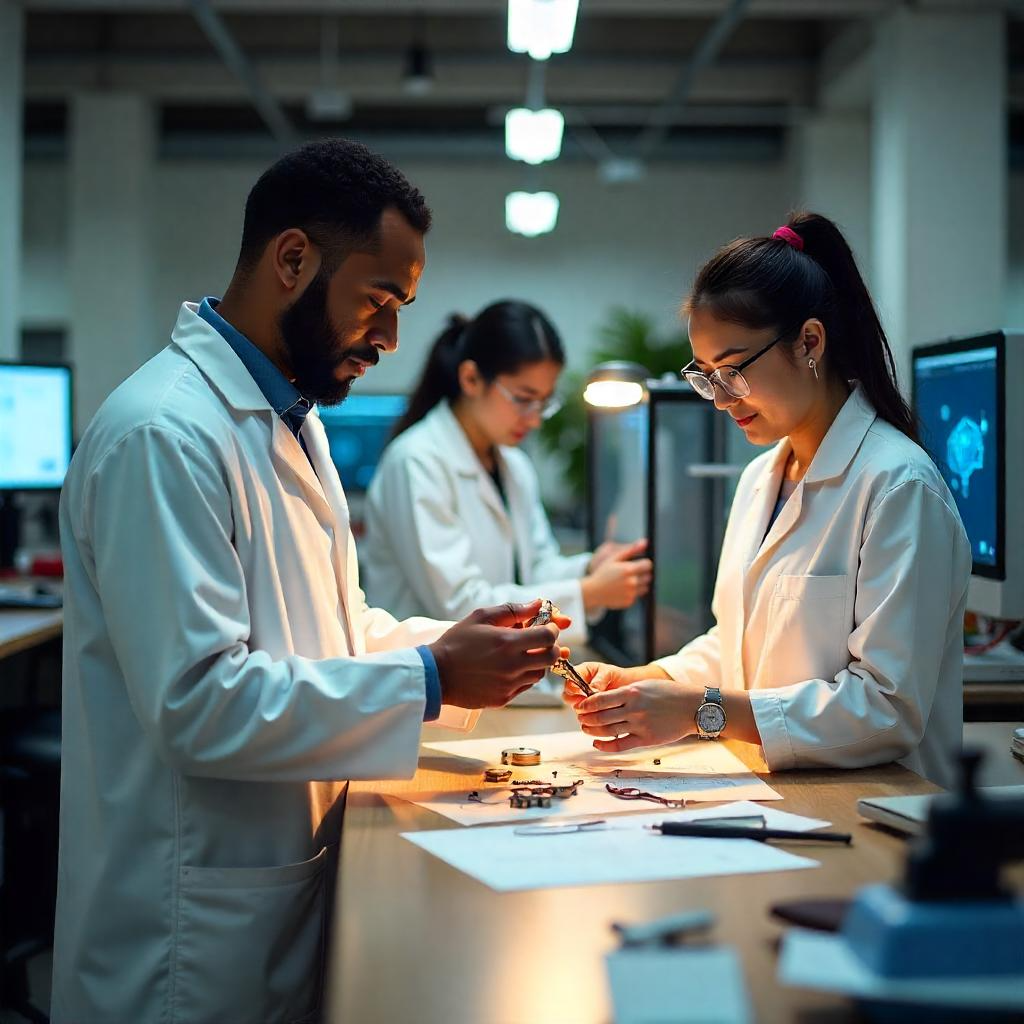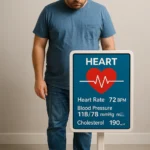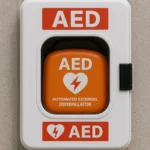
Revolutionizing Patient Monitoring With Wearable Biosensors in 2025

Revolutionizing Patient Monitoring
The Rise of Wearable Biosensors
In today’s medical landscape, wearables are the overheat-taking system as they allow healthcare workers to monitor health in a more cost-effective and accessible manner.
- Instant Health Insights: Wearables provide accurate data, making health management preventive.
- Accessibility: They make sophisticated monitoring easy to use, and for many people, it becomes cost-effective. This technology enables patients to monitor their health even more carefully. Researchers gain essential data on the disease and advancement. Healthcare providers will provide more personalized, informed care. To start with, wearable biosensors are not just gadgets; they are significant tools for the future of our health.
Historical Context of Wearable Biosensors
Wearable biosensors have emerged like gate hillers in healthcare; they have grown from a simple tool to a sophisticated device that measures health in time. This change is the result of:
- The advent of miniaturization: Technology and components have followed suit in advance, which results in the devices getting smaller and portable enough, e.g., BT earpieces for cellphones, RFID tags for supply monitoring, and the like.
- Rising health awareness: Public health has dramatically improved the demand for personal health through continuous monitoring.
Evolution in Healthcare
From discovery to integration: The tools initially designed for research fit into everyday health strategies due to the favorable feedback from the active users.
- Enhanced data collection: Now, they use collections of biometric data to help with patient-specific care.
Impact on Medicine and Public Health
- Empowerment: Patients’ people can control diseases and conditions.
- Accessibility: The devices are introduced to improve health tracking and reach those without regular healthcare services. In a nutshell, wearable biosensors have completely transformed healthcare, making us conscious of our health like never before.
Current Innovations in Wearable Biosensors
Transforming Healthcare
The bio-wearable tech market is currently on the rise in medical technology. These biosensors facilitate real-time monitoring that helps doctors make a swift and efficient decision to save the patient, thereby achieving better health.
- Enhanced Monitoring: Tracking your vital signs like heart rate and glucose constantly and instantly.
- Data-Driven Decisions: When the problem occurs, medical personnel are directly alerted, and thus, they intervene before the issue worsens.
The Stats Speak
- Market Growth: The health wearable tech industry may reach one trillion dollars by 2025, states one of the reports dealing with company revenue.
- User Engagement: EngAGE Privacy Policy Of over 70 users, relationships are users, and relationships are developed to raise awareness of health and self-care. Revolutionary Potential: Picture health care enhanced with real-time insights from wellness; it’s not only a futuristic idea but a reality already.
Impact of Wearable Biosensors on Healthcare
Transforming Lives
Introducing bio-wearables changes the healthcare attitude, affecting patients, families, and public health.
- Enhanced Monitoring: Patients can now continuously keep track of vital signs using real-time data that can be utilized to detect diseases at their early stages.
- Empowered Families: Alerts are sent to caregivers whenever the patient is in need, and they make them feel secure whenever their loved ones are weak or affected by health issues.
- Public Health Insights: Aggregated data might reveal the health conditions of different people over time. Hence, it may allocate resources to those areas that need them the most.
Improved Quality of Life
The benefits are immediate:
- Personalized Treatments: Customized treatments based on real-time patient data are the facts in which people can gain better services.
- Increased Independence: People can also make decisions about themselves with or without knowledge of the healthy state but feel like managers of the vote despite the report on well-being practice. “I am feeling safer and more connected to my health with the wearable I wear,” declared one of the users. This new technology is not just the wave of the moment. Still, it is also a shining star that has extended human life and changed medical care to a brighter side.
The Impact of Wearable Biosensors on Healthcare Professionals and Institutions
Challenges Faced
Introducing wearable biosensors in healthcare can have its drawbacks. Exhibit:
- Training needs: Medical professionals must undergo thorough training on new technologies, which is time-consuming.
- Cost implications: The initial cost of acquiring new equipment from the limited resources would subject institutions to tight budgets.
- Integration hurdles: The problem of integrating wearable technology with current healthcare infrastructural systems is something you would have to wait for and plan for.
Opportunities for Improvement
Conversely, these challenges present many opportunities:
- Enhanced resource management: The software that processes the data in real time ensures that the distribution of resources is fair and efficient. Patient care: Continuous changes help eradicate the problem quickly and have positive results. In summary, quickly and producemitting patients to real-time data enables the ability to reach real-world, more effective healthcare.
Benefits of Wearable Biosensors in Healthcare
Enhanced Solutions for Patient Care
The use of wearable biosensors goes beyond mere trendiness; it is a radical change in healthcare. These monitors assess health status every minute, allowing for an increase in the level of control of chronic diseases.
- Real-Time Monitoring: Quick alerts and updates could assist in the early detection and prevention of health issues. Imagine receiving messages if something doesn’t go the right way.
- Personalized Health Insights: Recommendations set up based on the individual’s condition will only lead to better decisions.
Efficiency and Improved Outcomes
Wearable biosensors seek to improve healthcare technology by making the system run smoothly.
- Reduced Hospital Visits: The ongoing monitoring of patients can lead to less frequent visits to the hospital.
- Evidence-Based Decisions: The accuracy of the data provided through the patient portals will directly affect the medical outcomes and the construction of wellness platforms. Eventually, with the makeover of technology on a medical pitch, these innovations have improved efficiency, and patients have been even more satisfied; hence, the health outcomes are also better. Why should the past bog us down?
Challenges and Ethical Concerns in Patient Monitoring with Wearable Biosensors
Patient Perspectives
- Privacy Issues: Patients always worry about their very private health data. They think it will be accessed, and they also fear that it may be misused.
- Reliability: Are these devices genuinely accurate? What if you get false readings on your health data due to a mistake, which makes you panic or miss a diagnosis?
Researcher Perspectives
- Data Interpretation: We cannot find anything significant based on the vast data we are gaining. As a result, selecting important and data-based insights becomes difficult.
- Bias in Algorithms: Algorithms that are not cautiously prepared often reflect the social prejudices that exist in society and consequently can harm those who are marginalized.
Regulator Perspectives
- Lack of Standards: The present regulations that cover biosensors are very tight, and because of this, the quality and safety of the devices have no alternative but to be inconsistent.
- Accountability: Who is to blame when a device is utilized incorrectly? The patient or the development team? These ethical challenges show that corporate social responsibility is essential in introducing new technology.
Revolutionizing Patient Monitoring: The Rise of Wearable Biosensors
Getting Started with Wearable Biosensors
Being part of the wave of wearable biosensors in health can lead to a change in your life. Take the following steps to begin:
- Explore Different Devices: x3
- Use Dedicated Apps: Employ a dedicated app that, along with syncing your data, gives you information about your health concerning your device.
- Set Health Goals: Establish clear objectives, such as getting in good shape or managing your chronic illness; wearables help you get the result. Engagement is key– your involvement is the more inspired you are in healthful lifestyles for wearing wearables!
Revolutionizing Patient Monitoring
The Future is Wearable
Suppose you can get your health data by waving your hand. Wearable biosensors based on wristbands are the ones that will make the patient observation method quite different.
- Instant data access: Real-time measurement of health control signals.
- AI-powered analysis: Artificial intelligence can monitor early-stage disorders before they cause difficulties.
- Enhanced personalization: Well-timed and tailored health recommendations for individual needs only.
Career Opportunities in Biotech
The advancement of biotechnology will open up new job possibilities!
- Biomedical engineers: The creators of the new wearable tech set to change the industry.
- Data analysts: People who are interpreting large amounts of health-related data.
- Regulatory affairs specialists: One who protects other people’s rights in ethical dilemmas related to technological development. The melding of technology and healthcare introduces possibilities only bounded by creativity. Ready to be part of the change? The next wave of innovation is calling.
The Shift in Healthcare Monitoring
Currently, wearable biosensors are a revolutionary technology in healthcare that is relatively new and patient-centered. These gadgets allow the human race to keep track of their health status while traditional ways are gradually declining. And this trend will continue.
Key Takeaways
- Actively Participate. You can adopt wearables to master the health issue.
- Keep Yourself Updated. Maximum knowledge about these technologies will help you make better choices.
- Be one with change. The future is now, and it is better to be part of it than to be left behind. Do not wait! Discover more about how these innovations can improve your health. Ask your physician about including the tools in your healthcare regimen.












Post Comment